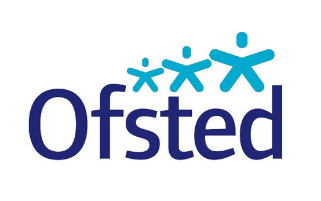Holybrook Curriculum
 Holybrook’s Curriculum Intent
Holybrook’s Curriculum Intent
Is our intent clear?
- There is a clear and coherent rationale for the curriculum design
- The rationale and aims of our curriculum design are shared across the school and fully understood by all
- Curriculum leaders demonstrate a clear understanding of important concepts related to curriculum design, such as knowledge progression and sequencing of concepts
- Curriculum coverage and implementation allows all pupils to access the content and knowledge (both substantive and disciplinary) and make progress through the curriculum
What is our rationale?
These are the characteristics/qualities we want for our pupils:
- Happiness and joyfulness
- An good understanding of how to stay safe
- To value education
- Social mobility through cultural capital: vocabulary, essential knowledge, skills and understanding, oracy. We want them to ‘bash the barrier’ – breaking the cycle of deprivation/preventing the self-fulfilling prophecy
- To be active in their own learning
- Resilience: accepting of praise and constructive criticism in equal measure
- Respectful of others
- Ambition
- Confidence
- To understand and value their self-worth
- To be empowered by choice
- Open-mindedness
- To be sociable
- To be inquisitive
- Collaboration: working well as part of a team, and sharing
- Reflectiveness: being able to learn from mistakes / disappointments
- Acceptance
- To be good citizens
We have developed a curriculum that has our children at its centre. We have worked together to identify 4 drivers which must lie at the heart of our curriculum design and delivery, to build upon our pupils’ strengths and experiences and address any deficits, including social disadvantage. Each curriculum theme is developed by initially considering these drivers.
- Fresh Experiences: it is vital that we provide learning opportunities that take our pupils beyond Ravenscliffe – both physically and in terms of their imaginations - as our children have rarely travelled beyond the estate or experienced educational workshops/visitors in school. These ‘fresh experiences’ are aimed at developing semantic rather than purely episodic memory.
- Equality and Diversity: understanding, appreciating and celebrating difference, particularly cultural as this is an area that our community has, in the past, struggled with; making sure everyone’s rights and needs are understood and addressed; everyone is given the same opportunities
- Our Place in the World: Where does Bradford sit in relation to the whole country? the world?; sustainability and ecology, preserving the future, global citizenship; democracy, responsibilities to the city / UK / world; understanding Bradford’s significance in history/now.
- Possibilities: it is vital that our children’s minds are opened to the possibilities that exist for them in terms of, for example, careers, job opportunities and travel. In this way they will become more aspirational as will their parents.
These drivers affect the methodology we use in delivering our curriculum as well as the subject content.
- Through Chris Quigley’s Essentials Curriculum, we use the National Curriculum Programmes of Study as our minimum core content.
- Each teacher has been actively involved in planning the curriculum for every subject from the Foundation Stage to Year 6, carefully considering what is being taught, in what order and why?
- Key, subject specific concepts/disciplinary knowledge, substantive knowledge and skills are repeated throughout each year and across each milestone to ensure that subject specific knowledge and skills are strong
- We ensure our curriculum is balanced through the provision of bespoke curriculum offers to support children’s wider development e.g. Nurture sessions; social skills groups; precision teaching; and through new experiences linked to each curriculum theme
Curriculum leaders show understanding of important concepts related to curriculum design, such as knowledge progression and sequencing of concepts
- Using the National Curriculum through Chris Quigley’s Essentials as a basis for our curriculum content, we have explored recent cognitive theory such as Ebbinghaus’ Forgetting Curve; Cognitive Load Theory; Retrieval Practice and Semantic Memory and applied this to our curriculum design.
- This has resulted in a curriculum where key concepts/disciplinary knowledge, substantive knowledge and skills are carefully sequenced and, in the case of disciplinary knowledge, continually repeated to ensure appropriate and effective cognitive load, retrieval practice and the development of pupils’ semantic memory. Over time, children’s understanding of these key concepts and skills is reinforced, deepened and broadened.
Our curriculum design
Holybrook’s curriculum has been designed to ensure that there is real thinking behind what is being taught, when?
As teachers and subject leaders we have to be able to articulate why we are teaching what we are teaching when we are teaching it.


